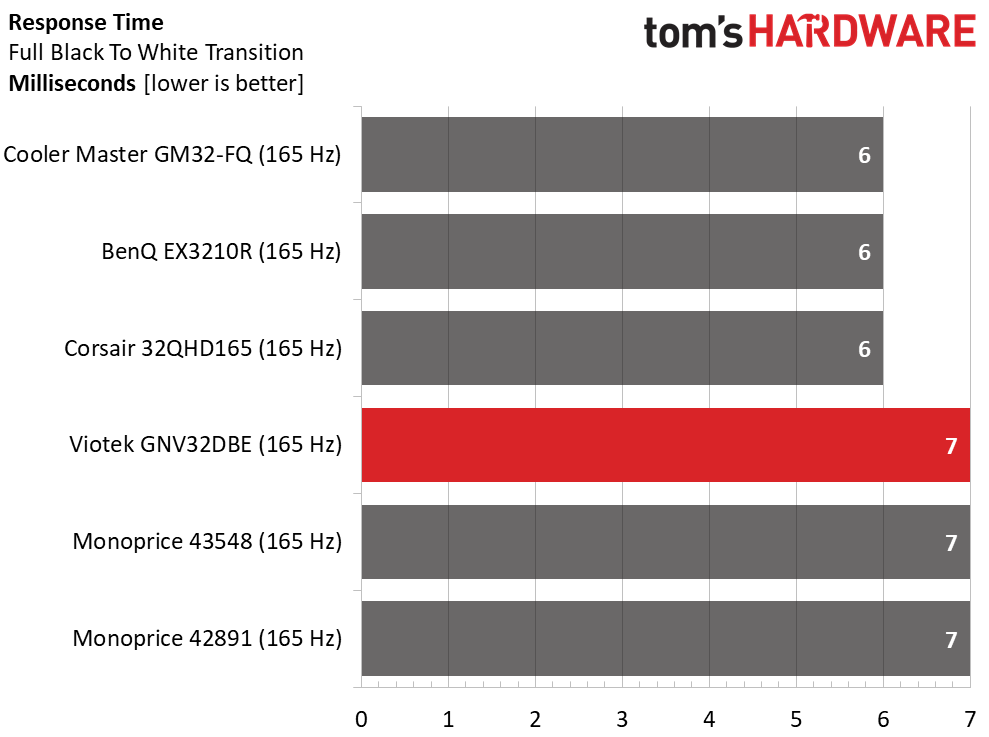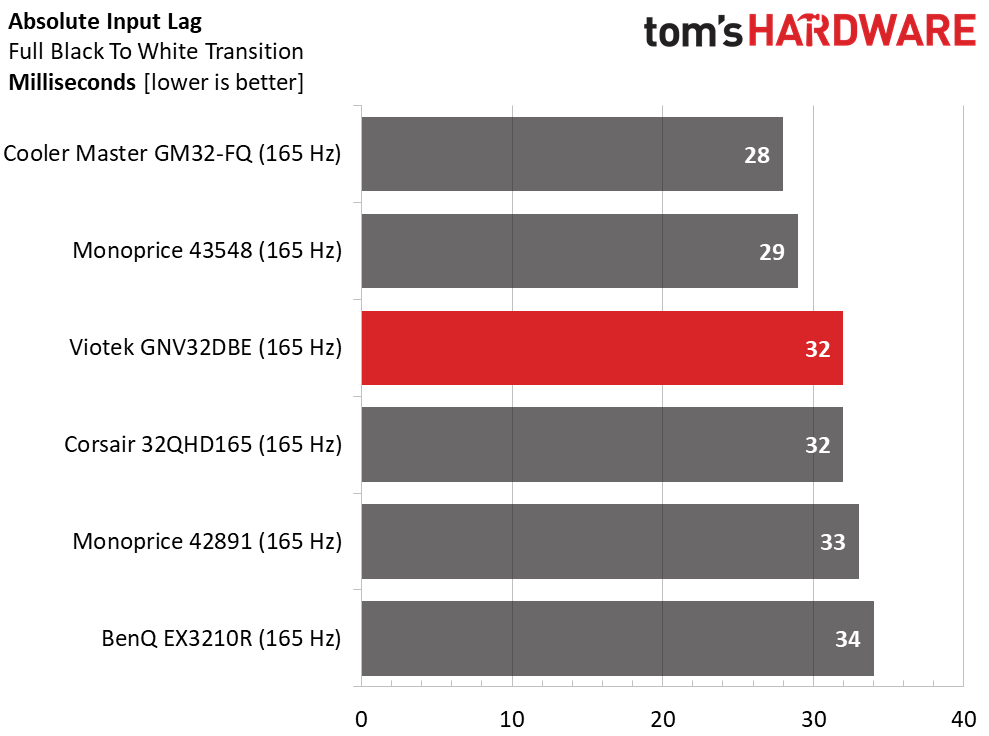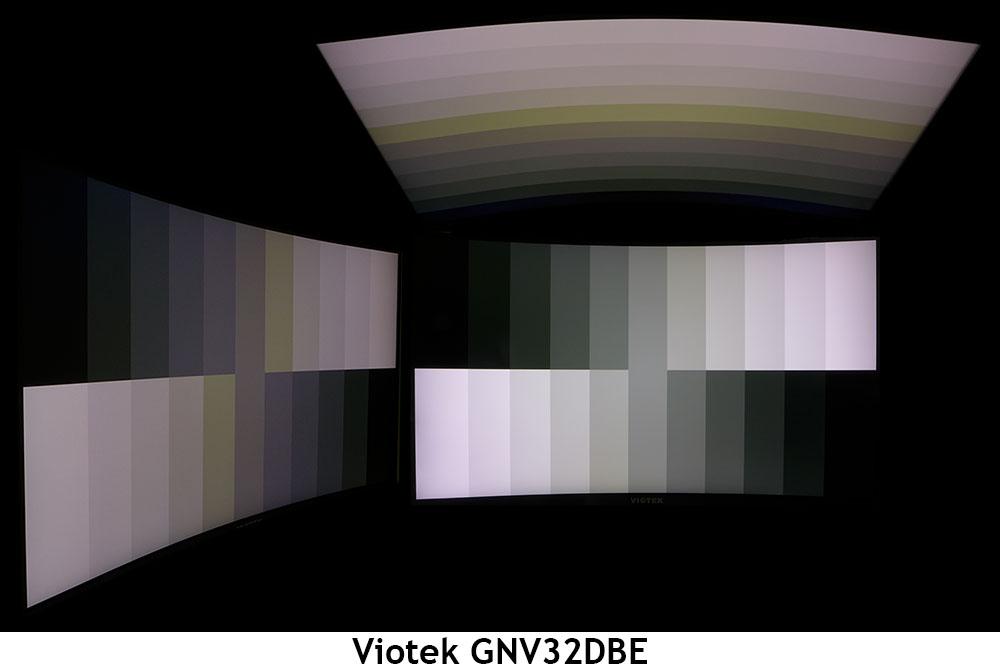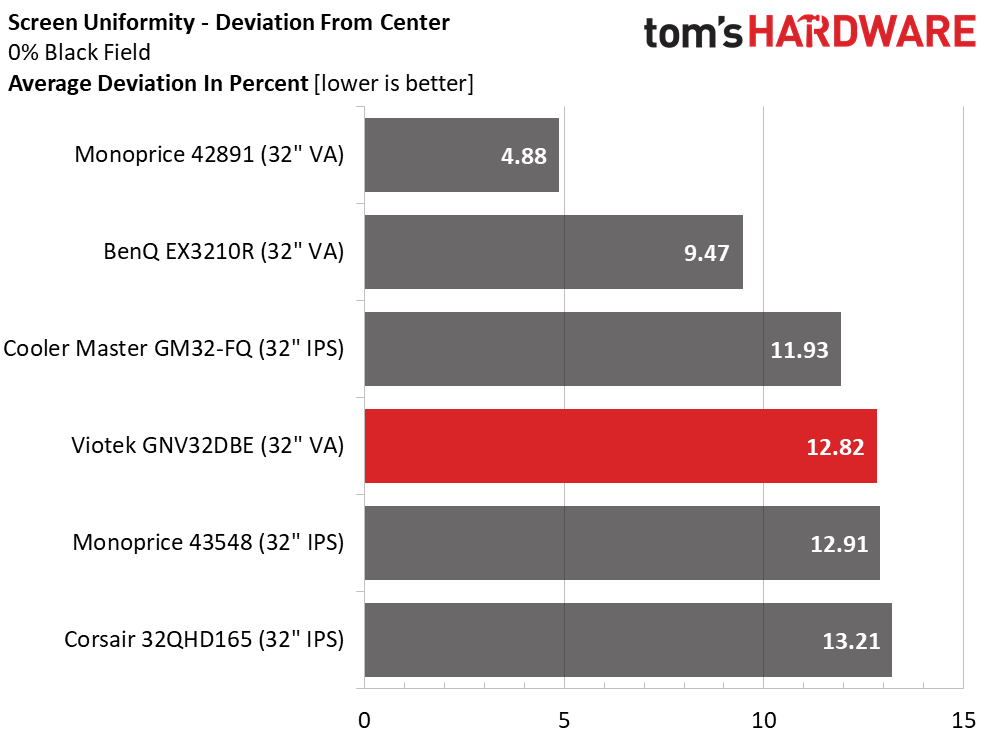Why you can trust Tom's Hardware
The 32-inch QHD 165 Hz category is full of capable screens, so I had no problem finding some to compare with the GNV32DBE. From Monoprice comes the 42891 (VA) and 43548 (IPS). Then we have the Cooler Master GM32-FQ (IPS), BenQ EX3210R (VA) and Corsair 32QHD165 (IPS).
Pixel Response and Input Lag
Click here to read up on our pixel response and input lag testing procedures.


The group is evenly split between 7 ms and 6 ms response times. The Viotek is in the former group, which puts it on par with a 144 Hz display. The difference is subtle in practice but if you want the smoothest possible motion, a faster response time, even just 1ms faster, is important.
In the total lag test, the GNV32DBE is about average among 165 Hz monitors. 32ms is plenty quick enough for gamers of average to above average skill. The most competitive players will want to consider a 240 Hz or faster screen. However, Viotek delivers terrific performance for a really low price here.
Viewing Angles
The GNV32DBE’s off-axis image gets darker at 45 degrees to the sides with a 40% light reduction. The color shifts to green enough that sharing this monitor might not be a great idea. The top view is similar with the same lowered brightness and green tint. Stick to the head-on view for the best results.
Screen Uniformity
To learn how we measure screen uniformity, click here.
My GNV32DBE sample measured well in all screen areas except the bottom right corner. I could see a slight hotspot there when viewing a black field pattern. The anomaly wasn’t a problem in actual content, and the rest of the screen looked fine to the naked eye. There is nothing to complain about here.
Get Tom's Hardware's best news and in-depth reviews, straight to your inbox.
Current page: Response, Input Lag, Viewing Angles and Uniformity
Prev Page Features and Specifications Next Page Brightness and Contrast
Christian Eberle is a Contributing Editor for Tom's Hardware US. He's a veteran reviewer of A/V equipment, specializing in monitors. Christian began his obsession with tech when he built his first PC in 1991, a 286 running DOS 3.0 at a blazing 12MHz. In 2006, he undertook training from the Imaging Science Foundation in video calibration and testing and thus started a passion for precise imaging that persists to this day. He is also a professional musician with a degree from the New England Conservatory as a classical bassoonist which he used to good effect as a performer with the West Point Army Band from 1987 to 2013. He enjoys watching movies and listening to high-end audio in his custom-built home theater and can be seen riding trails near his home on a race-ready ICE VTX recumbent trike. Christian enjoys the endless summer in Florida where he lives with his wife and Chihuahua and plays with orchestras around the state.

